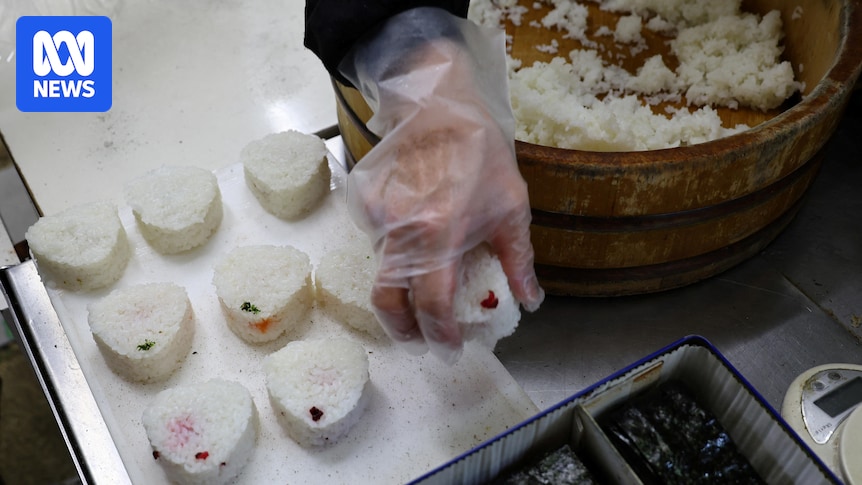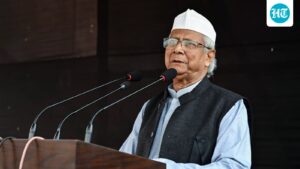
For decades, Japan’s stringent protection of its rice market—a symbol of cultural pride, postwar resilience, and self-sufficiency—has been a significant barrier to broader trade deals. Last month, rice once again became a contentious point during negotiations over US “reciprocal tariffs,” with President Donald Trump labeling Japan as a “spoiled” country that “won’t take our rice.” However, this time, Trump announced what he framed as a tariffs breakthrough: Japan agreeing to import more US rice.
Rice prices have nearly doubled since last year across Japan. A combination of supply miscalculations and a poor harvest left supermarket shelves empty, sparking rare street protests and prompting the government to release emergency stockpiles. Yet, the question remains: Can the Japanese public embrace foreign rice?
Cultural Cornerstone and Economic Pressures
Rice holds a central place in Japan’s history and political landscape. Rice planting festivals are still significant rituals in rural areas, and rice is a staple in offerings during ceremonies to gods or weddings. “It’s a delicate tightrope between price and protecting our identity,” said Yusuke Yokoyama, a Tokyo resident, noting that many local restaurants have stopped offering free “refill” rice. “People in Japan are generally happy to have lower prices for rice, but they also don’t want to import it.”
Japan’s policy of reducing produce supply to control prices has persisted for 50 years. In the late 19th century, as Japan faced geopolitical tensions while opening up to the West, rice was even woven into military transformation. Yokoyama explained that many Japanese are aware of rice’s historical connection as a symbol of Japanese identity and sovereignty.
“Japan previously paid farmers to leave their fields fallow,” said Jeffrey Kingston, professor of History and Asian Studies at Temple University Japan. “The idea was to keep prices stable. But now we see how this entire system—combined with high tariffs and climate shocks—has become untenable.”
Political and Economic Shifts
For decades, Tokyo maintained one of the most rigid agricultural systems in the developed world. Under the now-defunct “gentan” policy, farmers were paid not to grow rice, and strict production targets were set to manage supply. Entrenched protectionist measures were implemented to shield small-scale rice farmers.
“The youngest farmer I know is 65,” Kingston said. “The aging population will have adverse effects on the sector whether Tokyo likes it or not.” Nicole Freiner, author of “Rice and Agricultural Policies in Japan,” criticized the government’s program to subsidize farmers to limit rice production due to declining demand as short-sighted.
Japan’s protectionist stance has long frustrated international trade partners, particularly the United States. The Trump administration made it a mission during recent tariff negotiations to gain greater access to Japan’s rice market. Some netizens pushed back, sharing clips of an anime film where a Japanese character tells a pushy US politician that Japanese consumers prefer home-grown rice over California rice.
Japan imports 770,000 tonnes of foreign rice annually, but much of it has traditionally been used for processing or animal feed, not table rice.
Future Implications and Market Dynamics
Japan’s Prime Minister Shigeru Ishiba pushed back against US claims of a sweeping victory, stating, “We made absolutely no sacrifice in the agricultural sector.” Marcel Thieliant, Asia Pacific analyst at Capital Economics, noted that Japan negotiated cautiously, keeping the overall import quota unchanged, but a larger share of that quota would now come from the US rather than other countries.
Experts suggest that the proportion change of staple rice imports, even within existing frameworks, may signal a gradual shift away from hardline protectionism. “The [US] side deal is significant in symbolic terms; it may be an indication that Tokyo is becoming more willing to open its rice market—at least, when it needs help,” Freiner said.
For ordinary citizens, many remain uneasy, and some local broadcasters have directed the blame at the rise in foreign tourists as Japan records an all-time high for international tourism figures. “As the yen falls, locals have started to become angry,” said Kingston. “They watch foreigners swaggering about, buying up real estate and eating cheap, while local households feel the pinch of inflation—even in their daily meal of rice.”
Since the July agreement, Japanese supermarket prices have fallen following the government’s release of stockpiled rice. However, prices are still nearly double the same time last year. Industry analysts note that the increase in imports of rice for human consumption has been modest so far relative to the scale of the domestic supply shortfall, and distribution has yet to catch up with rising consumer demand.
A System Under Pressure
Last year’s harvest was devastated by record-breaking heat, and with meteorological extremes becoming more common, experts say Japan’s model of matching production to slowly declining demand is no longer sufficient. “Climate is affecting harvesting rice and other products,” said Yokoyama. “The policy may have to change. Our food security is not high, and people are starting to understand that now.”
A sense of frustration has grown among farmers, angry at the regulations limiting how much rice they can grow, which spilled over into protests earlier this year. Japan’s food self-sufficiency rate has languished around 30–40 percent for decades. Despite pledges to raise it, little has changed.
“What the government should do now is stop subsidising crop conversion,” said Yusaku Yoshikawa, an agricultural aid consultant with Japanese Official Development Assistance Projects. “Instead, they need to create a safety net for farmers against surplus-related market crashes.”
Already, the government has dipped into emergency stockpiles to manage supply, but analysts warn that short-term fixes cannot resolve long-term instability. They must also be careful not to overcorrect, as producing too much rice now could lead to a glut and cause prices to crash.
“We’re in a delicate moment,” Yoshikawa said. “We’ve gone from rice scarcity last year to needing policy imagination. What’s needed now is not just price control.”







